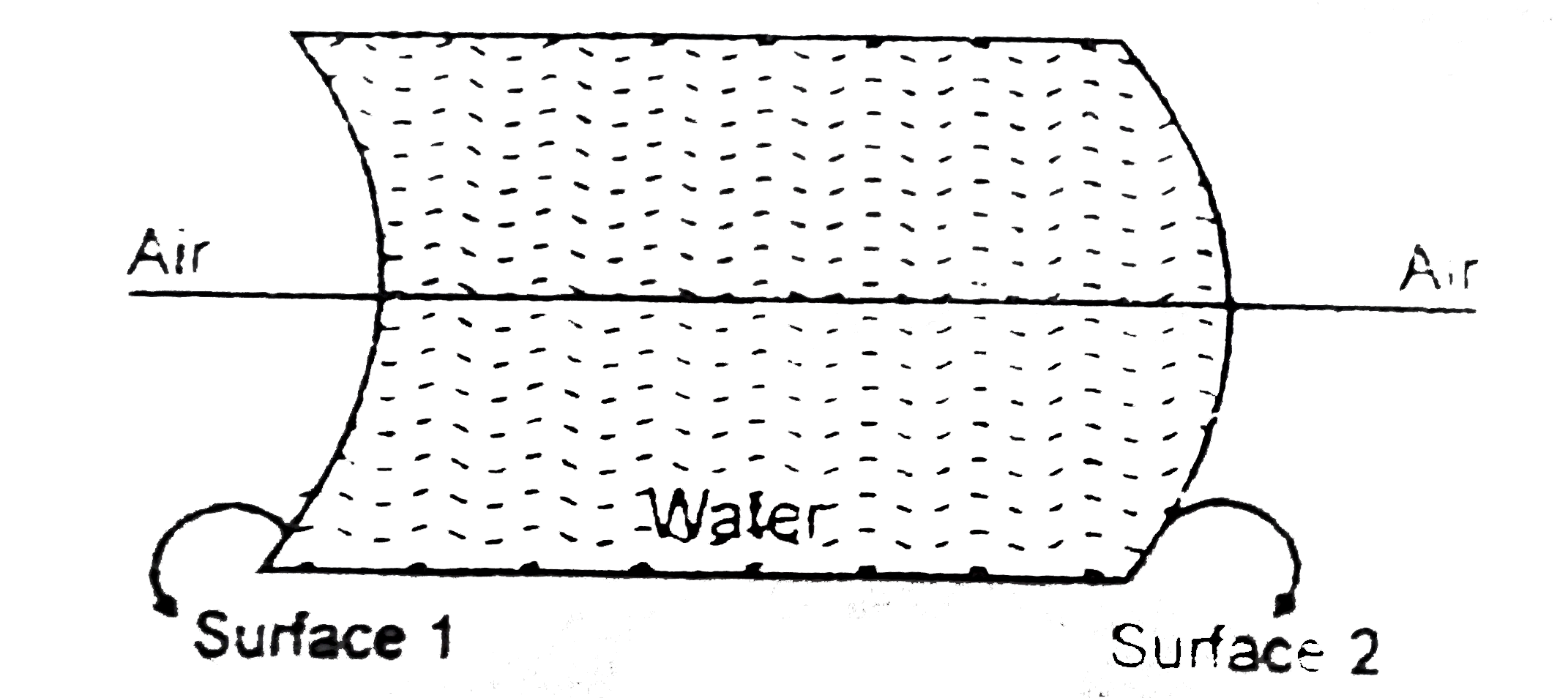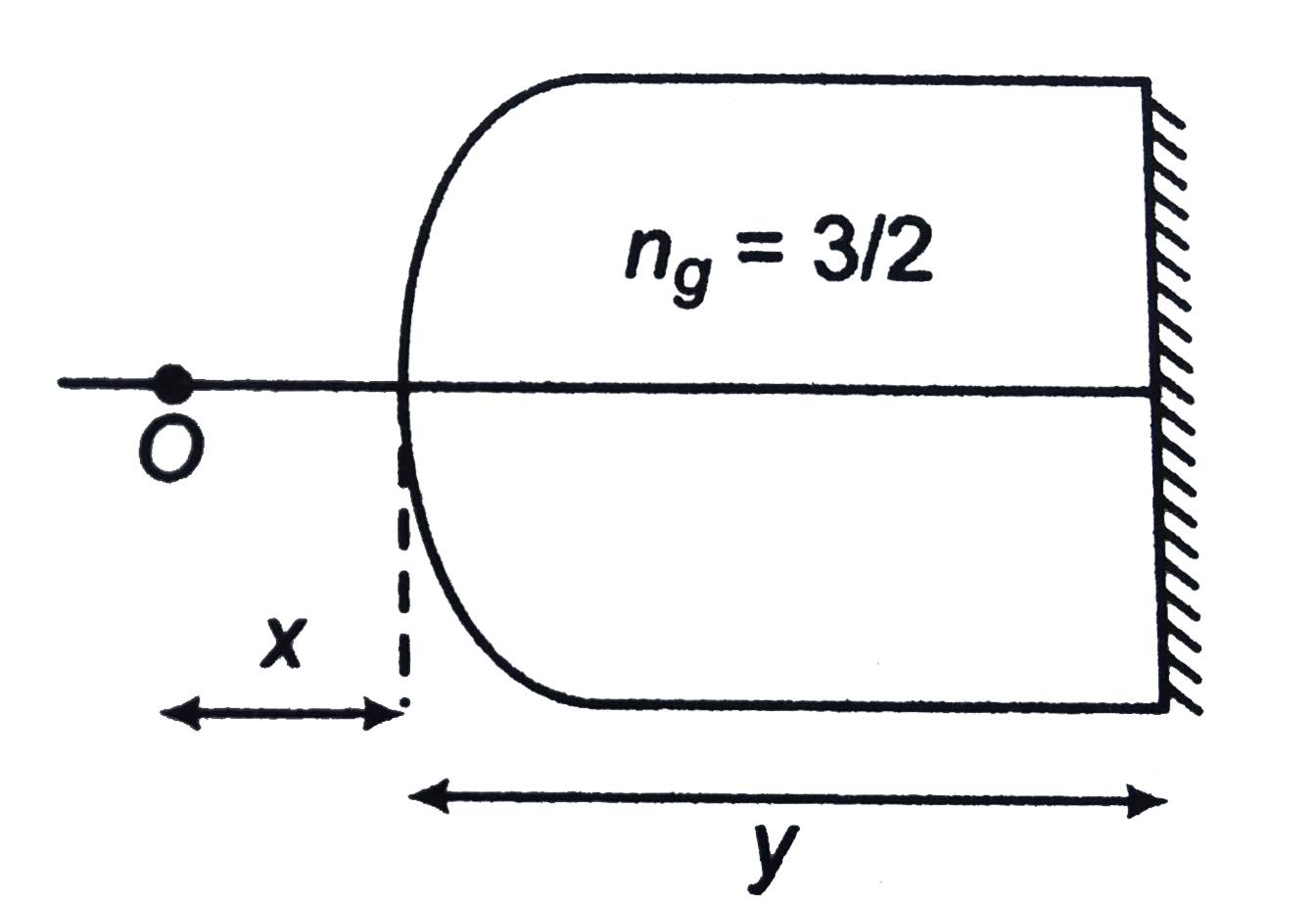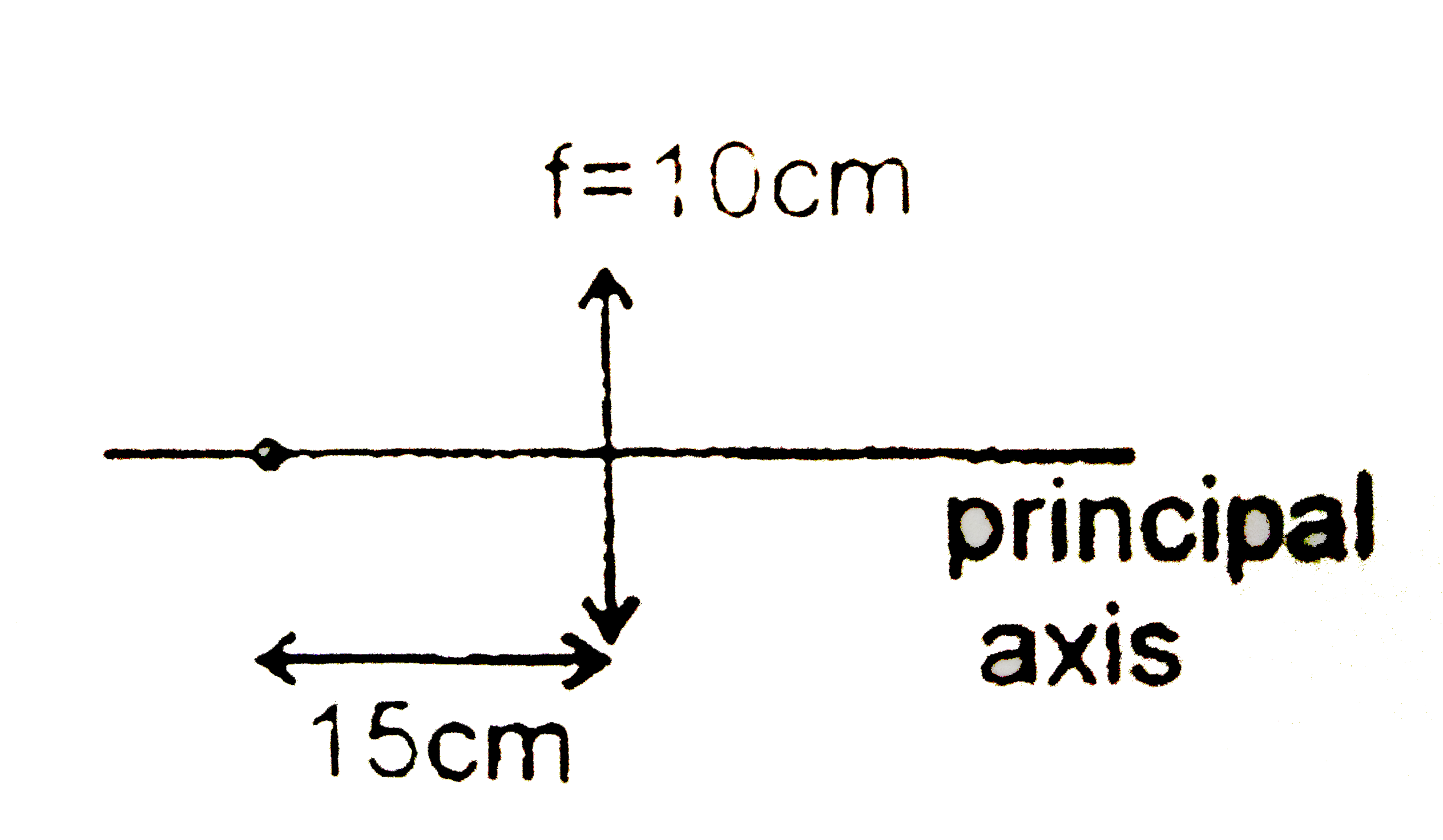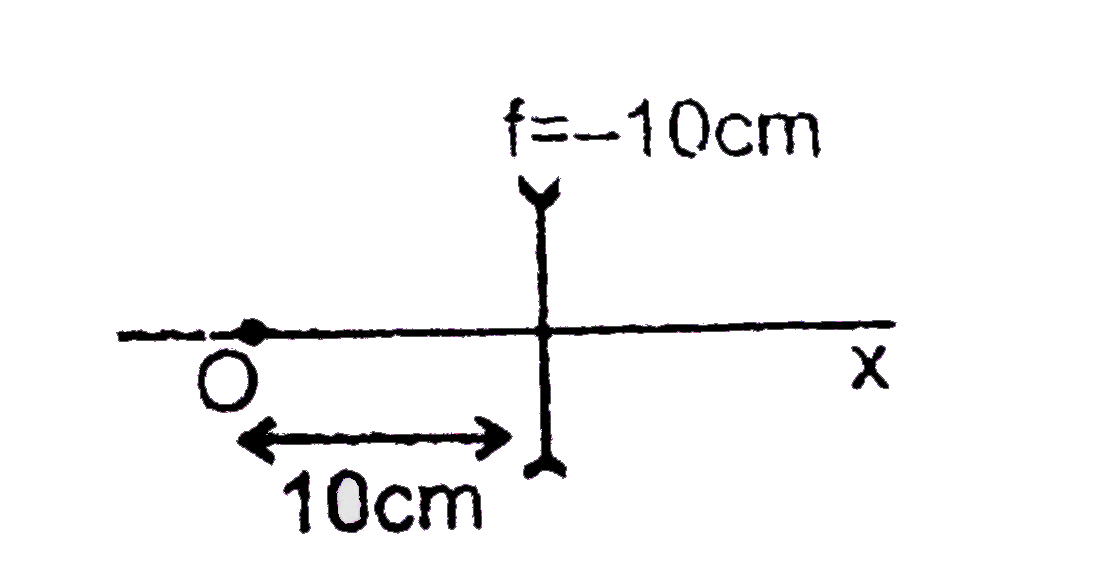All objects referred to the subsequent problems lie on the principal axis.

In above question if the object is real, then the final image formed after two refractions :
may be real
may be virtual
must be virtual
both A and B
The correct Answer is:D

Consider object on left side of spherical surface seperating two media.
If real object is in rarer media i.e. n1<n2
Then n2v=n2−n1(−u)+n1−R=−ve
Hence image shall be virtual for a real object lying
on concave side with rarer media....(1)
If real object is in denser media i.e. n1>n2
n2v=−(n1−n2)(−u)+n1(−R)=n1−n2u−n1R
∴ Image is real if
n1−n2u>n1R or u<(n1−n2)Rn1.....(2)
and image is virtual if u>(n1−n2n1)R...(3)
From statements 1,2 and 3 we can easily conclude the answers.
Topper's Solved these Questions
- BOOK - RESONANCECHAPTER - DAILY PRACTICE PROBLEMEXERCISE - DPP No.1120videos
DAILY PRACTICE PROBLEM
- BOOK - RESONANCECHAPTER - DAILY PRACTICE PROBLEMEXERCISE - DPP No.129videos
DAILY PRACTICE PROBLEM
- BOOK - RESONANCECHAPTER - DAILY PRACTICE PROBLEMEXERCISE - DPP No.920videos
DAILY PRACTICE PROBLEM
- BOOK - RESONANCECHAPTER - CURRENT ELECTRICITYEXERCISE - High Level Problems (HIP)21videos
CURRENT ELECTRICITY
- BOOK - RESONANCECHAPTER - ELECTRO MAGNETIC WAVESEXERCISE - Exercise 327videos
ELECTRO MAGNETIC WAVES
Similar Questions
Knowledge Check
- Question 1 - Select One
All objects referred to the subsequent problems lie on the principal axis.

If light is incident on surface 1 from left, the image formed after the first refraction is definitely :AReal for a real objectBVirtual for a real objectCReal for a virtual objectDVirtual for a virtual object - Question 2 - Select One
All objects referred to the subsequent problems lie on the principal axis.

If light is incident on surface 2 from right then which of the following is true for images formed after a single refraction.AReal object will result in a real imageBVirtual object will result in a virtual imageCReal object will result in a virtual imageDVirtual object will result in a Real image - Question 3 - Select One
In the figure shown , a point object O is placed in air on the principal axis. The radius of curvature of the spherical surfaces is 60cm. I is the final image formed after all reflections and refractions.
 AIf x=120cm, then I is formed on O for any value of yBIf x=240cm, then I is formed on O for any value of y=360cmCIf x=240cm, then I is formed on O for any value of yDNone of these
AIf x=120cm, then I is formed on O for any value of yBIf x=240cm, then I is formed on O for any value of y=360cmCIf x=240cm, then I is formed on O for any value of yDNone of these
A region bounding water has air on two sides. Tell the nature (real or virtual) of the image for following cases- (The object is real and lies on the principal axis (see fig) in all cases.)
(a) The object is to the left of surface 1 and the image to be considered is formed after the first refraction.
(b) The object is to the left of surface 1 and the image to be considered is formed after two refractions.
(c) The object is to the right of second surface and the image to be considered is formed after one refraction.
 View Solution
View SolutionFigure shows a point object and a converging lens. Find the final image formed.
 View Solution
View SolutionFor what position of an object, a real and diminished image is formed by a concave mirror ?
View SolutionIf an object is placed at the principal focus of a convex lens, the image formed is real, inverted and
View SolutionIf an object is placed at the principal focus of a convex lens, the image formed is real, inverted and
View Solution


